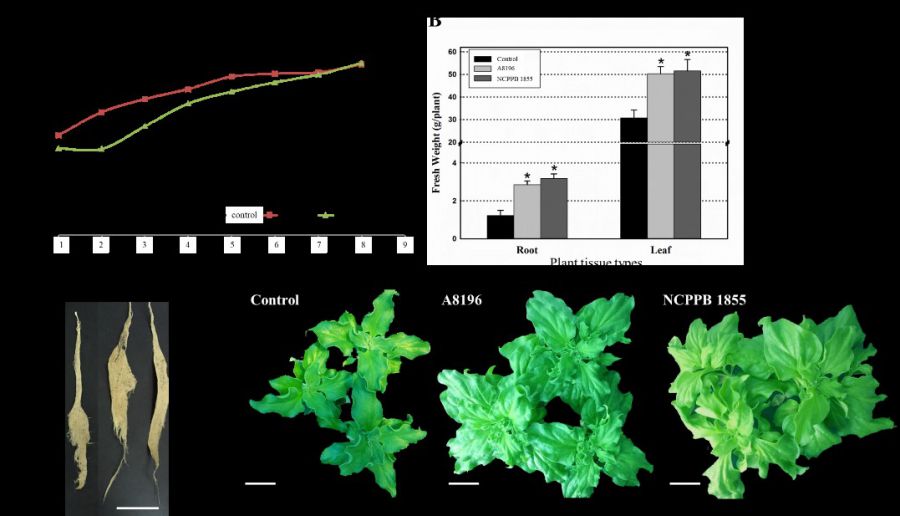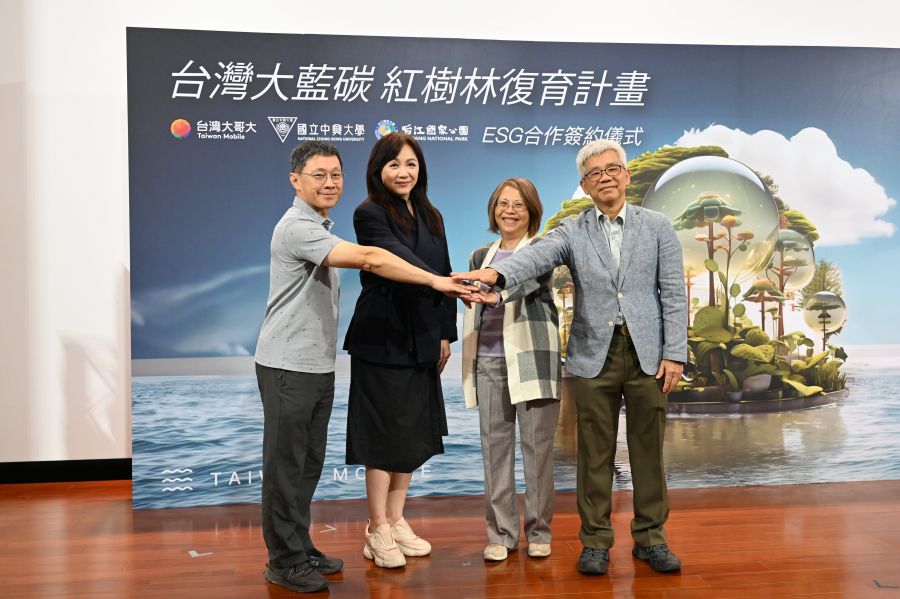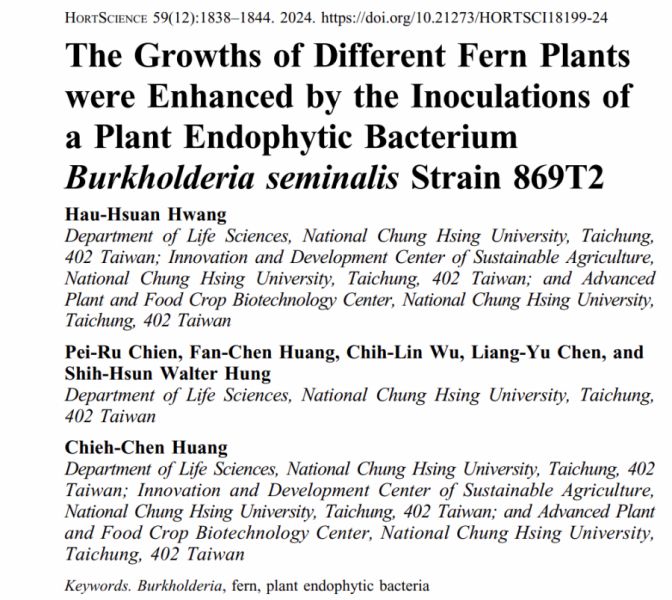| 論文篇名 | 英文:Effective Agrobacterium-mediated transformation protocols for callus and roots of halophyte ice plant (Mesembryanthemum crystallinum). 中文:以農桿菌建立冰花癒傷組織及根的轉殖系統 |
| 期刊名稱 | Botanical Studies |
| 發表年份,卷數,起迄頁數 | 2019, 60, 1. |
| 作者 | Hwang, H.H.,(黃皓瑄)* Wang, C.H., Chen, H.H., Ho, J.F., Chi, S.F., Huang, F.C., and Yen, H.E. |
| DOI | doi:10.1186/s40529-018-0249-3. |
| 中文摘要 | 與興大生科系顏宏真老師合作建立冰花的轉殖系統,冰花(Mesembryanthemum crystallinum L.)為生長於高鹽和乾旱環境的耐鹽模式植物,但因冰花的組織再生效率較低,使得目前仍無有效率的轉殖系統幫助冰花的基因進行功能分析。我們分別使用二種農桿菌:根瘤農桿菌和髮根農桿菌進行轉殖,使用冰花的癒傷組織、小苗及植株作為材料,成功地建立冰花小苗和植株的轉殖系統,並利用農桿菌感染後產生的轉殖根進行冰花基因的功能性分析。 |
| 英文摘要 | Background Ice plant (Mesembryanthemum crystallinum L.) is a model plant for studying salt-tolerant mechanisms in higher plants. Many salt stress-responsive ice plant genes have been identified with molecular and biochemical approaches. However, no further functional characterization of these genes in host plant due to lack of easy and effective transformation protocols. Results To establish efficient transformation system of ice plants, three types of ice plant materials, hypocotyl-derived callus, aseptically-grown seedlings and pot-grown juvenile plants, were used to develop Agrobacterium-mediated transformation protocols. The highest transient transformation efficiency was with 5-day-old ice plant callus co-incubated with an Agrobacterium tumefaciens at 2.5 × 109 cells mL−1 for 48 h. The 3-day-old ice plant seedlings with root tip removed were successfully infected with A. tumefaciens or A. rhizogenes, and obtained 85% and 33–100% transient transformation rates, respectively. The transient transformation assays in ice plant callus and seedlings demonstrated that the concentrations of Agrobacteria, the durations of co-incubation time, and the plant growth stages were three important factors affecting the transient transformation efficiencies. Additionally, pot-grown juvenile plants were syringe-injected with two A. rhizogenes strains A8196 and NCPPB 1855, to establish transformed roots. After infections, ice plants were grown hydroponically and showed GUS expressions in transformed roots for 8 consecutive weeks. Conclusions Our Agrobacterium-mediated transformation protocols utilized hypocotyl-derived callus and seedlings as plant materials, which can be easily obtained in large quantity. The average successful transient transformation rates were about 2.4–3.0% with callus and 33.3–100.0% with seedlings. We also developed a rapid and efficient protocol to generate transgenic roots by A. rhizogenes infections without laborious and challenging tissue culture techniques. This protocol to establish composite ice plant system demonstrates excellent improvements in efficiency, efficacy, and ease of use over previous ice plant transformation protocols. These Agrobacterium-mediated transformation protocols can be versatile and efficient tools for exploring gene functions at cellular and organ levels of ice plants. |
【學術亮點】以農桿菌建立冰花癒傷組織及根的轉殖系統 2019-01-07

循環農業:農業廢棄物再資源化【生科系黃皓瑄副教授】






